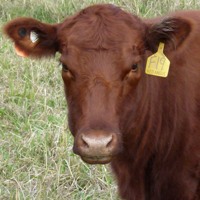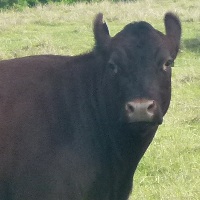Red Angus cattle fit into many successful crossbreeding and composite breeding programs. They have contributed moderate birth, poll genes, solid homozygous colour and carcass quality into these planned breeding systems. The Red Angus compliments many other breeds, such as the Hereford, to produce a highly desirable Red Baldy female. Similarly, Red Angus and Gelbvieh have proven to be a popular cross and are highly sought.
ADAPTABILITY TO DIVERSE ENVIRONMENTS
Red Angus cattle can range for food and water across a wide range of Australian climate types. They cope with drought and heat stress. Angus cattle do not suffer from eye cancer and Bos indicus crosses are tick resistant.
FERTILITY AND EASE OF CALVING
A major advantage of Red Angus calves are their low birth weights. There are fewer calving problems and consequently there are shorter intervals between calving. For the cattle breeder, this means more live calves on the ground – essential to profits. One example of the benefits of a Red Angus infusion is that of a commercial cattleman in Central Australia who first bought 20 Red Angus bulls in 1993. Since purchasing Red Angus bulls his calving percentage has increased by 30% (600 more calves per year), the temperament of the herd has improved significantly, saving two weeks on his annual muster and the presence of the polled gene introduced by the Red Angus has saved on dehorning which, in turn, has reduced carcase damage.
EXCELLENT MEAT QUALITY AND CARCASS YIELD SUPERIORITY
In steer trials examining commercial value, Angus crosses have proven definitively their meat quality. In addition, Angus cross calves are usually polled which assures carcass damage is minimised.
For more information: Red Angus Society of Australia



